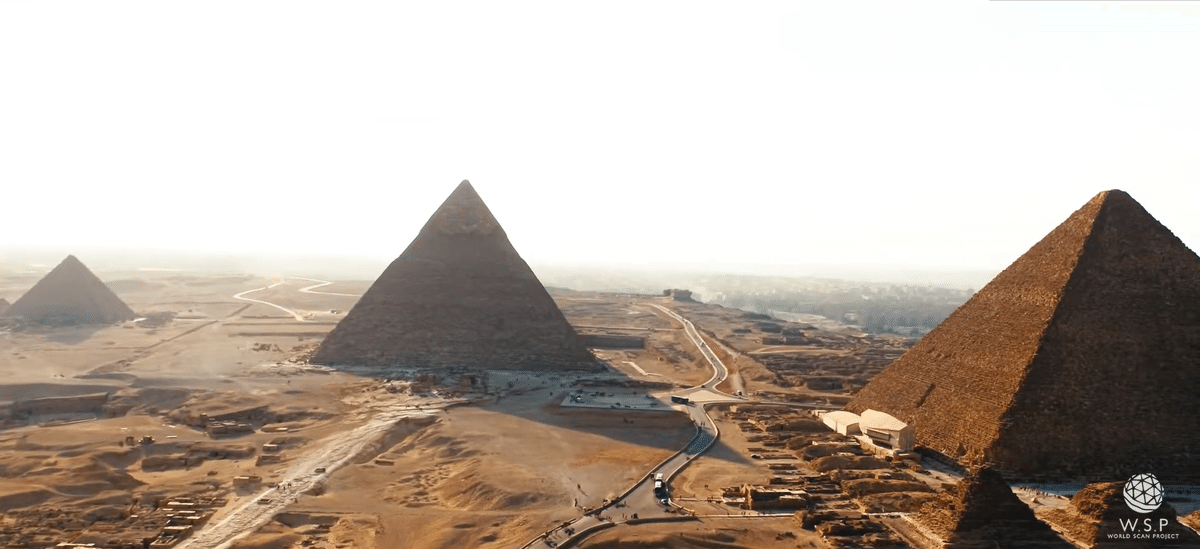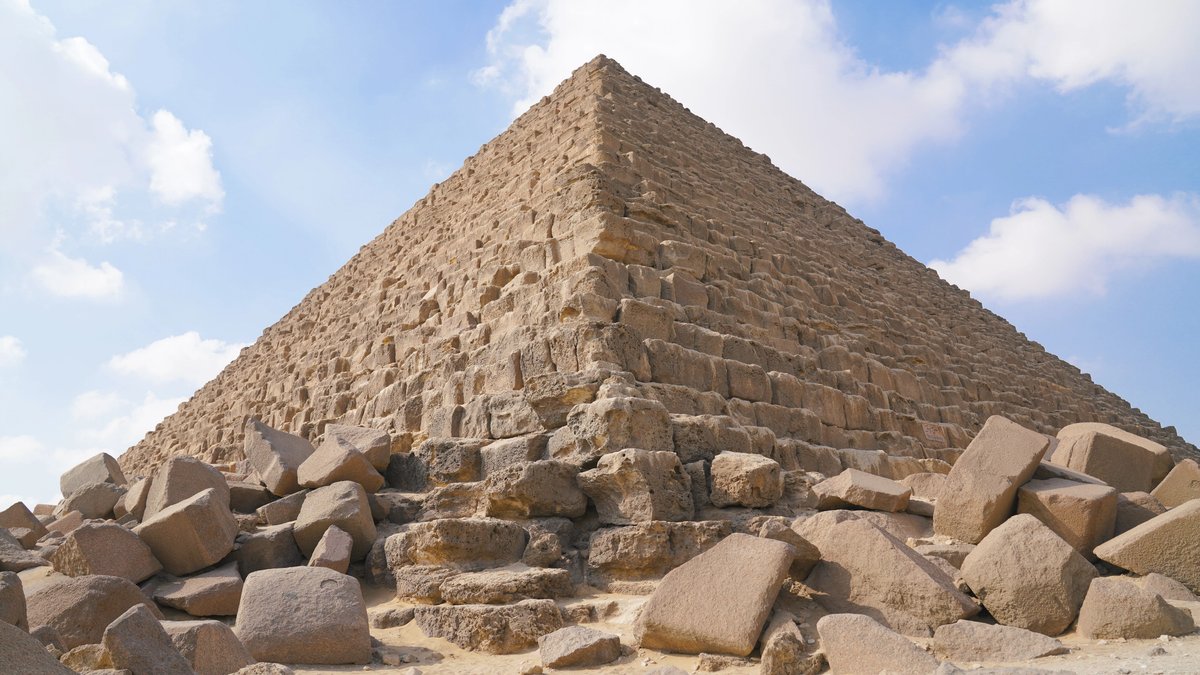
The Greatest Mystery of Ancient History - Why Were the Pyramids Built?
Pyramids have fascinated people for generations as the symbolic structures of ancient Egyptian civilization. Among them, the Three Great Pyramids of Giza are renowned for their astonishing construction techniques and the enormous amount of labor that went into their construction.

Why did the ancient Egyptians build such grand structures? The World Scan Project is actively investigating the reasons behind the construction of the pyramids and their structural features through a collaborative effort with a team of archaeologists, employing the latest research methods.
Background of the Pyramids
Ancient Egyptian pharaohs were believed to be reborn and gain eternal life after death. This belief is considered a primary motivation for pyramid construction. The pyramids were seen as passages for the pharaohs to be resurrected in the afterlife, and their monumental scale symbolizes the pharaoh’s power and divine nature.
In particular, the three Great Pyramids of Giza, built by King Khufu, Khafre, and Menkaure, represent the pinnacle of architectural achievement in ancient Egypt. Recent studies have revealed that the pyramids are more than just tombs; their internal structures reflect sophisticated techniques.
Workers Involved in Pyramid Construction
It is estimated that tens of thousands of workers participated in building the pyramids. Although it was once widely believed that they were built by slaves, recent studies suggest that these workers were more likely laborers under contract. They were mobilized during off-seasons, receiving food, clothing, and housing as compensation.
Near the pyramids of Giza, a workers' village has been discovered, revealing traces of the daily lives of those involved in the construction. Their diet consisted primarily of bread and beer, along with nutrient-rich foods. This finding indicates that pyramid construction was not just a national project but also had substantial social and economic impacts.
Construction Techniques of the Pyramids
The construction of the pyramids required tens of thousands of tons of stone, demanding remarkable techniques for quarrying, transporting, and positioning each massive block. For example, the granite sarcophagus and other stone materials inside Khufu’s pyramid reveal that ancient builders used circular tools to cut through hard rock. The precision of their techniques continues to astonish modern researchers.

One of the most striking architectural features in Khufu’s pyramid is the "Grand Gallery," a passage that showcases the pinnacle of ancient Egyptian building techniques. This impressive corridor, standing about 9 meters high, was ingeniously designed to distribute the weight of the stones and ensure the pyramid’s structural stability. Additionally, a series of spaces known as the “Relieving Chambers” were carefully engineered to effectively channel weight from above.

Pyramid of Khufu
Among the Three Great Pyramids, the Pyramid of Khufu is the largest and most famous. Built around the 26th century B.C., it consists of approximately 2.3 million stone blocks. Inside, there are various chambers and passages, the most notable being the “King’s Chamber.” This chamber is constructed of polished red granite, an exceptionally hard stone quarried in Aswan, far from the pyramid site.

The construction of the pyramid also incorporated defensive mechanisms, such as a “stone-fall trap,” to deter tomb robbers, reflecting the builders' intent to protect the pharaoh’s resting place. Furthermore, beneath the pyramid lies an unfinished space known as the “Subterranean Chamber,” which hints at the trial and error involved in its construction. The grandeur and engineering of Khufu’s pyramid stand as a testament to Egypt’s prosperity and the authority of the pharaoh.
Pyramid of Khafre
The pyramid of Khafre, son of Khufu, is the second largest of the three Great Pyramids. Remarkably, part of the original casing stones remains at the top, indicating that the entire pyramid was once covered in this smooth stone.

Inside this pyramid, there are several corridors and chambers, with the "Burial Chamber"—Khafre's final resting place—being particularly important. Like Khufu’s pyramid, the Burial Chamber’s design incorporates techniques for weight distribution, showcasing the advancements in construction technology during the 4th Dynasty. Khafre's Pyramid was also designed to symbolize pharaonic authority and served as a place for worship after his death.
Pyramid of Menkaure
Menkaure’s Pyramid is the smallest of the three, yet it was once known as the "Red Pyramid" due to its outer walls being covered with red granite. This pyramid features unique architectural elements, including a decorative motif in its interior rooms known as the "palace facade." This motif, imitating palace walls, symbolizes the pyramid as the pharaoh’s "eternal residence."

The interior also contains several passageways and unfinished areas, suggesting adjustments made during construction, possibly in a rush to complete the pyramid before Menkaure’s death. Like Khafre’s, Menkaure’s Pyramid was equipped with a “stone-fall trap" for protection against tomb robbers, though it could not entirely prevent looting.
Resources and Logistics Required for Pyramid Construction
The construction of the pyramids required immense resources and a sophisticated logistics system. Most stones were sourced from quarries around Giza, but some were transported from Aswan, a considerable distance away. The Nile River was essential for transporting these massive stones; boats were used to move them along the river, and wooden sleds and ramps were likely employed to transport them from the riverbanks to the pyramid sites.
In addition to stone, provisions for food, clothing, and tools for the workers on site were also necessary. It is believed that a nationwide supply network was established to efficiently manage these resources and sustain pyramid construction over several decades. Thus, pyramid construction played a critical role in supporting Egypt’s economic activity and reinforcing political control.
Latest Research and the Mysteries of the Pyramids
Research on the pyramids continues today, with discoveries about their interiors eagerly anticipated. The "ScanPyramids" project, led by Nagoya University, uses muon detectors to investigate the pyramids' internal structure, revealing previously unknown spaces. As these advanced technological studies progress, the day may be near when even more of the pyramids' mysteries are unraveled.
There may still be numerous unexplored spaces and passageways within the pyramids, and questions remain about their purpose and use. With each discovery, it is hoped that more of the intentions and design philosophies embedded in the pyramids will be brought to light.
Conclusion
The pyramids are a testament to the technological prowess and religious devotion of ancient Egypt, symbolizing the pharaohs’ majesty and their belief in eternal life. While recent research has shed light on their structure and construction techniques, many mysteries still surround these monumental structures. Through ongoing investigations and studies by the World Scan Project, we hope to continue unveiling the secrets of this vast heritage left behind by the people of ancient Egypt.
We remain committed to conducting 3D scans of archaeological sites worldwide, preserving this shared human heritage for future generations. If you are interested, please follow the activities of the World Scan Project, and we would greatly appreciate your support.

Related Information
WORLD SCAN PROJECT, Inc.
